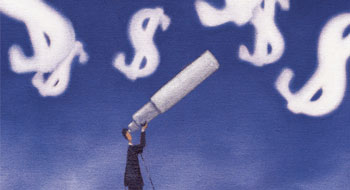

The past year was a good investment year with positive stock market returns and a slight rebound in long-term federal bond yields in the fourth quarter. However, for many pension plans, there’s been no significant gain in funding status—unless it came from large voluntary deposits by the employer.
Mercer released the results from its Pension Health Index today, which stood at 73% on December 31, up 5% over the quarter but down 1% on the year.
“Stocks delivered another strong performance in the fourth quarter and in 2010 overall, both domestically and abroad, with the biggest gains observed in Canadian stocks, signaling continued increase in consumer and investor confidence,” said Yvan Breton, leader of Mercer’s investment consulting business in Canada and Latin America. “The typical pension plan experienced a return on assets of almost 4% in the fourth quarter, improving the Mercer Pension Health Index by about 2%.”
Scott Clausen, retirement, risk and finance professional leader for Canada added, “Over the year, strong asset performance was offset by the overall drop in long-term federal bond yields. Any increase in the actual funded status of pension plans in 2010 is likely due to employers pouring cash into their plans.”
For example, BCE Inc. announced last month that it would make a voluntary $750-million payment to its employee pension plan, on top of a regular required payment in 2010 of $500-million.
Canadian National Railway Co. has made a similar move and made a $300-million additional voluntary contribution above required levels.
Clausen reminds employer that managing interest rate risk can be a challenge. When it comes to managing a pension plan, it’s a balancing act between assets and liabilities and plan sponsors need to keep their eye on both.
“I’d like to think again we are at the bottom, but there is no way to predict,” he says.
According to Mercer, a typical balanced portfolio would have returned 9.2% in 2010 and 3.6% in the last quarter of 2010.
However, the consulting firm expects that the funded ratio of most pension plans as shown in year-end 2010 corporate disclosures will drop compared to last year, even after accounting for employer contributions, since corporate bond yields used to value obligations for that purpose have dropped around 1% since the start of the year, due in part to a continued decline in credit spreads.
Where to invest
Results for 2010 showed that Canadian equities were the best performing asset class last year with a return of 17.6%. The S&P/TSX returned 9.4%.
Canadian bond performance, as measured by the DEX Universe Bond index, returned 6.7% in 2010, led by long-term bonds, which gained 12.5%, followed by mid-term bonds (7.8%) and short bonds (3.6%).
Overall bond yields (measured by the DEX Universe Bond index yields) gained 3.11%.
International equities, as measured by the MSCI EAFE (CAD) index, provided a return of 2.6% in 2010. In local currency terms the MSCI EAFE returned 5.3%.
Emerging markets, as measured by the MSCI Emerging Markets (CAD) index, returned 13% last year.
The million-dollar question is where pension funds should be putting their money in 2011.
Related Links
Bonds: not to be forgotten – By Greg Rodger and Dan Hallett
Canadian equity bull has room to run – By Vikram Barhat
Economists predict growth in major markets – By Suzanne Sharma
